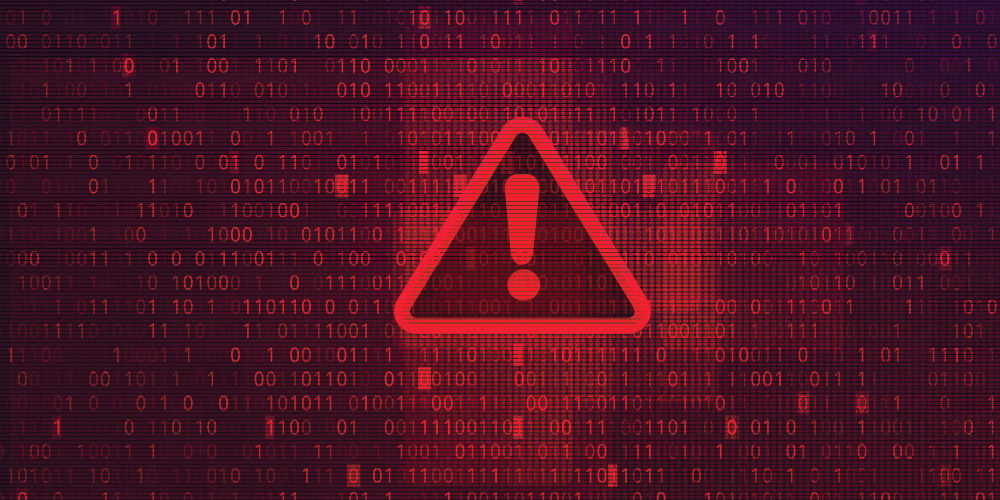
Feb 6, 2020 | SMB Technology, SMB Technology, SMB Technology, SMB Technology, Technology News
Commonly, employees are thought to be the “weak link” in combating cyberattacks. What if, with thorough training, your employees become your best resource in fighting attacks like phishing, ransomware and malware, and social engineering attacks? These threats can all lead to your network and data being compromised as well as your business losing revenue and your clients’ trust. Read on to learn more about common threats and how to train your employees to have a role in combating them. Know the Threat Landscape Threats to cybersecurity abound, and some of the most common are ransomware and malware, which can get to your network via phishing schemes and social engineering attacks. Ransomware is a type of malware in which files are encrypted and become unreadable, and can only be available again if the user pays money (a ransom) to get a key to get the files unlocked. Malware, in general, is malicious software designed to steal confidential information, insert a virus into the network, or both. Commonly, malware and ransomware enter a network via social engineering attacks such as phishing schemes. A bad actor pretends to be someone the victim knows, and tricks them into giving confidential data. For example, the attacker may pretend to be a fellow employee needing assistance that requires access to the network. Instead of trying to find and exploit weaknesses in the system itself, the criminal tries to find “weaknesses” in the victim–a desire to help others, for example. Train Employees to Recognize and Prevent Attacks There are excellent online and in-person training programs to prevent cyber attacks. This training can be a good foundation...

Jul 16, 2019 | SMB Technology, SMB Technology, SMB Technology, SMB Technology, Technology News
With the advance of technology, many benefits have come to businesses—commerce taking place twenty-four hours a day and the ability to have meetings with workers half a world away, among others—but cybercriminals have learned to exploit technology, using practices such as phishing (planting a fraudulent link in an email) to gain access to business’s data and networks. With social engineering, Phishing, and Spearfishing on the rise it is important for you to raise employee awareness about these threats. Read on to discover how to keep your business safe from this type of intrusion. What Phishing is and How to Prevent It Phishing is an increasingly popular way for attackers to access company data and plant malware in a network. A phishing attempt involves putting a fraudulent link in an email to get the recipient to click on the link and unwittingly import malware into their company’s network. Spear phishing, a related type of attack, focuses on an organization or individual. Employees can be trained to recognize an attempt by looking for clues. One is misspellings and grammatical errors in the message. Another tipoff is a strange or suspicious sender’s address; if it looks strange or suspicious, don’t open the email. Yet another practice is to point the mouse arrow over a link to look at it without clicking. All are things an individual can do, and there are additional effective practices. Focus on the Fundamentals The best preventive measures are simple. According to a CompTIA article, getting the basics right is one of the soundest investments a business can make. Prevention, as always, is far less costly than repair....

May 21, 2019 | SMB Technology, SMB Technology, SMB Technology, SMB Technology, Technology News
Even with so much information available about how to protect your network and business from data breaches and cyber attacks, a surprising number of businesses aren’t prepared. Read on to learn about how to make your company an exception. Know and Understand the Risk A recent Forbes article reports on a new survey of 600 IT security and IT Operations decision-makers. The results reveal the level of risk to networks and the level of business’s preparation—and how much education and preparation are still needed. According to survey results, 60% of respondents had a data breach within the last two years, and more than 30% had experienced more than one breach. Vulnerabilities can occur anywhere—in a company’s on-premise systems, or through an employee’s mobile device accessed in an unsecured area. All it takes is one weak spot in the network, to compromise the entire system. Common causes of breaches include lack of security protocols to begin with (52% of respondents), unpatched software (51%), and lack of automation in patch application. Steps to Protect Your Network’s Security Instead of simply lamenting the lack of security, these statistics serve to point the way to achieving network security. Knowing problems common to businesses can guide your business in what aspects of network security to focus on first. Businesses can start by performing a network audit to find any weak spots where network security vulnerabilities may exist. Be sure to check that OS patches are up-to-date, and that antivirus and anti-malware definitions are current. Monitor endpoints including mobile devices and devices used by remote workers and perform periodic network scans to detect...

Apr 9, 2019 | SMB Technology, SMB Technology, SMB Technology, SMB Technology, Technology News
With some parts of the country heading into tornado season, and with natural and man-made disasters a possibility anywhere, there’s no time like now to consider how to keep your business running in the event of a flood, fire, earthquake, or even a cyber attack. A Business Continuity (BC) plan keeps your business running both during and after a disaster, minimizing downtime and the resulting loss of revenue and reputation. Read on to learn more about what such a plan can mean for your business. The Cost of Not Being Prepared An event such as a storm or a cyber attack has the potential to severely impact your business. According to technology research firm Gartner, businesses that experience a data disaster have a two-year survival rate of just 6%. Also, for every hour of downtime, $42,000 can be lost. Moreover, the loss of reputation of your business if customer data is lost or leaked, can be significant. If your business is in an industry subject to special regulations (HIPAA, for instance), data compromise can bring about fines and other penalties. To avoid these consequences, and to get the best results from your business’ technology budget, ask questions to assess your risks. Components of a Business Continuity Plan One key consideration is which components of your business are mission-critical. Perhaps it’s maintaining access to data that is needed to run the business. Or it’s keeping the data you have safe. Perhaps it’s ensuring employees within your company can communicate with each other by email. Another part of the plan is to determine recovery-time objectives, how long your business can be...

Dec 7, 2017 | SMB Technology, SMB Technology, SMB Technology, SMB Technology, Technology News
Businesses today are under constant attack from Cyber Criminals. Ransomware, including the WannaCry Virus , is an example of a top threat to avoid. With the risk of lost data, lost productivity and lost reputation, isn’t it time to close the door on Cyber Crime? Here are a few tips to defend your company from potential cyber attacks. Document Operating System Security Patch Policies and Procedures Take the time to review and update your documented security policies and procedures. Security and related patch policy should identify who is responsible for application and operation of system patches and system updates. Clearly determine whose responsibility it is to apply the latest operating system and related security patches. Whether this process is manual, or done automatically through a managed service, be sure your employees know which is the case. Also, document your policies to verify all your systems are in compliance. Review your Cybersecurity Framework Avoid data breaches resulting from lack of Cybersecurity defence. Ensure your AntiVirus and Malware detection definitions are up to date. Utilize spam filtering and other Cyber Threat detection to protect your business. Consider penetration testing to identify any weaknesses on your network. Also ensure your employees are periodically trained to identify and avoid malware and phishing schemes. If you have suffered a data loss due to Cyber attack, ensure you have a communications plan to notify all stakeholders and authorities within adequate time frames. Having a solid data protection plan including Cloud Backup can minimize your exposure and increase your recovery time. Study Machine Learning to Combat Cyber Threat Cybercriminals are using automation, artificial intelligence and machine...






